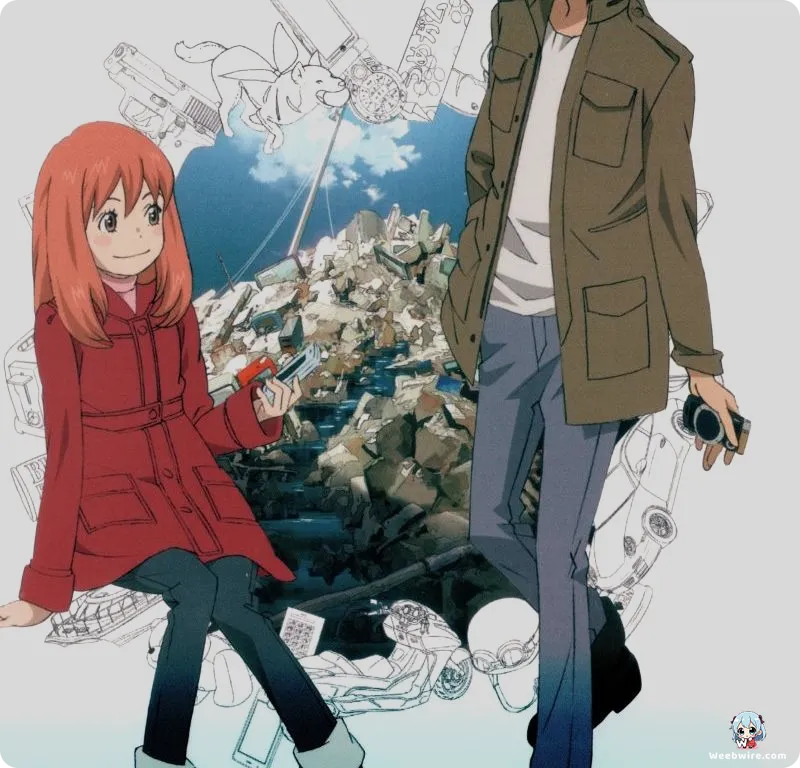Beyond the Seleção Game: Unpacking the Revolutionary Production Choices and Societal Realism of Eden of the East: The King of Eden

The 2009 cinematic release, Eden of the East the Movie I: The King of Eden, serves as the continuation of the acclaimed Higashi no Eden television series. While the film expertly navigates the immediate aftermath of the high-stakes Seleção game and the fate of amnesiac protagonist Akira Takizawa, the production’s depth lies in the sophisticated choices made by creator Kenji Kamiyama.
Kamiyama's Blend of Sci-Fi and Political Realism
Kamiyama, renowned for his meticulous world-building in series like Ghost in the Shell: Stand Alone Complex, deliberately infused this science fiction thriller with profound social and political realism. The core premise, where 12 individuals are granted 10 billion yen and tasked with the impossible mission of 'saving Japan,' is not merely a plot device, but a potent metaphor.
Kamiyama uses the Seleção challenge to critique the perceived inertia and lack of national direction prevalent among modern Japanese youth, specifically spotlighting the 'NEET' (Not in Education, Employment, or Training) phenomenon. The supporting cast, organized as the 'Eden of the East' club, leverages innovative app development, embodying the question: If given unlimited resources and total anonymity, how would one truly address society’s most entrenched, unaddressed crises? This commitment to domestic political discourse distinguishes Kamiyama’s work, often overshadowing its flashier sci-fi elements.
Unconventional Aesthetics and Global Scope
Adding to the franchise's unique identity is the unconventional musical selection. The use of the British rock band Oasis’s track, “Falling Down,” as the opening theme for the original series was a bold departure from the standard practice of commissioning Japanese artists. This choice immediately signaled a wider, more mature, and international focus, perfectly aligning with the series' sophisticated themes and realistic settings.
This global scope is physically realized in The King of Eden as the narrative shifts to the United States, specifically the meticulous, photorealistic rendition of Washington D.C.

Production I.G. cemented this commitment to realism through exhaustive location scouting for the film's American settings. Unlike common anime practices that rely on stylized backdrops, Eden of the East showcases hyper-accurate environments. This detail was crucial for rooting the fantastical Seleção premise in a tangible, believable world, maintaining the tension that these life-and-death stakes are unfolding in our reality.
Character Design and Prescient Technology
Furthermore, the character designs, crafted by Chika Umino (known for Honey and Clover and March Comes In Like a Lion), offer a compelling contrast. Umino’s delicate, charming style injects necessary relatability into a narrative centered on espionage and national conspiracy. This aesthetic choice ensures that viewers remain deeply invested in the personal drama of Takizawa and the earnest heroine Saki Morimi, even as the larger political mechanisms grind forward.
Finally, the technology introduced, the mysterious AI assistant 'Juiz,' proves remarkably prescient. Developed and released in 2009, the concept of a powerful, personalized AI managing vast financial resources through voice command anticipated the mainstream rise of platforms like Siri and Alexa. The King of Eden explores the mechanics and ethical weight of this advanced, centralized AI, offering an early fictional examination of power dynamics in advanced technological systems, long preceding contemporary discussions around large language models. The film, and the franchise as a whole, remains a testament to blending speculative technology with deeply relevant social commentary.
Credits
Eden of the East the Movie I: The King of Eden
Author
Kenji Kamiyama
Cover Art
Chika Umino
Studio
Production I.G
Publisher
Fuji Television Network, Inc.
Producers





